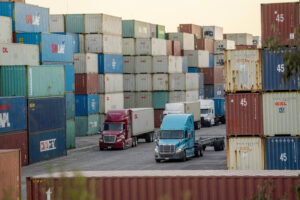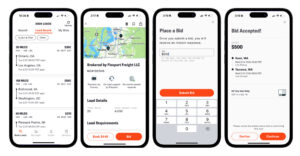Looking to get into the freight business? That means you need to get started at knowing the industry. There’s an enormous number of resources out there, but finding them can be a huge hassle. That’s why we’ve put together a complete knowledge center for freight brokers like you can’t afford to miss out on. These valuable resources have everything you need to get your own business started, or to take your existing brokerage to the next level.
Business structure
Here’s a quick look at the differences between the most common forms of business entities
Broker Authority
Before you start operating, you need to get a freight broker authority.
Surety bond
Surety bonds hold business professionals responsible for acting ethically and lawfully while on the job.
insurance
Even though freight brokers are not physically handling cargo, they can be held liable.
What Does A freight broker do?
Order Tender: To start, a business (shipper) calls or emails an order to a 3PL (freight broker) for pickup. It is imperative that a 3PL collects all necessary information when tendering freight, no matter if it is a regularly scheduled shipment, or a special order or event. In addition to basic location and contact information, they need to know special packing or handling instructions, compliance standards, equipment, and consignee preferences.
If set up with Electronic Data Integration (EDI) or an Application Programming Interface (APIs), a shipper can provide all necessary information to their 3PL without email or phone, and instead have data automatically processed and sent over to their transportation partner.
Freight Scheduling: A 3PL then takes all the above information, enters the order into their freight management system, and works to schedule and confirm exact order pick-up and delivery times.
This is where a 3PL provider can offer tremendous value. They take the time to secure qualified transportation by selling and then booking, a skilled carrier on the order. A freight broker builds their network full of carriers they’ve vetted and can depend on. Rather than testing drivers on your own, you can rely on a truck broker’s experience and robust database to find the best option.
This is also when important handling information is shared. Before booking, it must be confirmed that the carrier (truck driver) has:
- Appropriate equipment that is clean and up-to-date
- A current, valid license
- The required amounts of cargo and liability insurance coverage
- Ability to handle any special needs (i.e. driver assist, team transit, etc.)
- A trailer that won’t be carrying any potential contaminants
- Committed to the mandatory timeline, with required drivable hours available
Dispatch: When the time comes for a scheduled order to be picked up, the 3PL personally connects with the driver, double checking all his/her important information (name, trailer type, truck #, trailer #, cell phone, and his current empty location), and re-communicates handling requirements. This is also when drivers are given pick-up information.
Loading: Your 3PL stays in contact with the carrier during the entire process of loading. This is not considered complete until all freight has been put on the trailer, the trailer has been shut, in some cases sealed, and the carrier has signed the shipper’s Bill of Lading (BOL), accepting possession and liability of the freight.
When speaking to the driver at this point, 3PL representatives should verify the skid and case count, as well as the destination shown on the bill, to make sure the carrier has been loaded with correct freight. This is an important step. Having to backtrack and try to resolve instances of wrongfully loaded product can derail tight timelines and cause unnecessary stress.
Transit: Your 3PL provider will stay in contact with the driver throughout transit of the load. Using GPS tracking technologies such as Macro Point, they can maintain the location of the shipment to delivery. Regular check-in calls with the carrier also help to ensure everything is on track and appointment times will be met. Your 3PL will often provide the carrier with driving directions, or act as a liaison to communicate any hurdles along the way, such as traffic or weather delays.
Unloading / Delivery: Once a driver has arrived at their destination, he or she must document the arrival time in case there is a problem with detention – if the carrier waits beyond a certain time limit, they can be charged.
Once the driver is fully unloaded, the consignee signs the Bill of Lading, noting any overage, shortages, or damages (OS&D), thus accepting possession of the delivering product. The consignee will document on the bill what time the unload was completed.
The 3PL now awaits the paperwork to be turned in by the carrier (Invoice, Proof Of Delivery (POD) etc.) so the shipper can be invoiced and the carrier’s payment cycle can begin.
Billing: Once a 3PL receives the carrier’s invoice, along with all necessary paperwork for the shipper, they are considered ready to bill and an invoice is generated.
Important transportation paperwork includes:
- Lumper Receipts
- Driver Work Receipts
- POD/BOL
- Rate Confirmation





